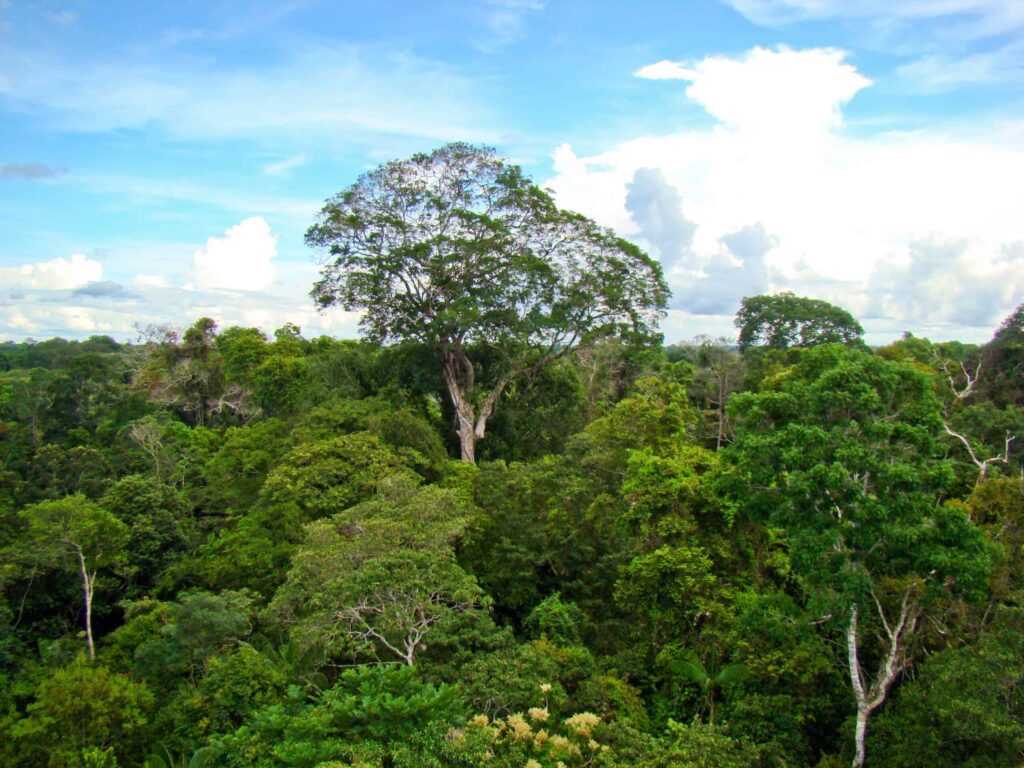
As the world is gathering in Brazil at the world’s biggest climate summit, the trees in the Amazon are telling a story themselves. The trees are getting bigger, almost as if they’re on steroids. And, in a way, they are. The “steroids” in this case would be the increasing carbon dioxide in our atmosphere.
A gruelingly detailed survey found that average tree size across the Amazon has increased by 3.2% per decade, in close correlation to the CO2 we emit. Yet, this is more than just a mark of our climate damage: it’s also a threat. The Amazon’s growth spurt is concentrating its immense carbon stores into its largest, most magnificent trees. And these giants, it turns out, are the most susceptible to the escalating threat of a hotter, drier world.
The Scale Is Striking
It’s not easy to conduct this type of measurement. The Amazon rainforest contains an estimated 400 billion individual trees, spanning approximately 16,000 different species. You obviously can’t measure each and every one of them, but how do you measure a representative sample?
The international team included researchers from 60 universities. These researchers used data from the painstaking work of the Amazon Forest Inventory Network (RAINFOR), a massive international collaboration of scientists who have braved insects, heat, and remote conditions for decades. They established plots in mature, undisturbed forests. They tagged every tree larger than 10 centimeters in diameter and returned year after year to measure their growth and note their deaths.
It’s a colossal bookkeeping exercise for nature itself, providing an unparalleled long-term view of the forest’s health. The results show a clear trend.

The very biggest trees are getting even bigger, with the maximum tree size in the plots growing by 5.8% per decade. At the same time, the number of large trees (those with a diameter over 40 centimeters) has been climbing by 6.6% each decade. This might not sound like much, but keep in mind that we’re talking about billions and billions of trees. The inertia of this process is enormous and every percentage counts.
“We knew that the total amount of carbon stored in the trees of intact Amazonian forests has increased. What this new study shows is that all sizes of tree have grown larger over the same period — the whole forest has changed,” says Professor Tim Baker from the University of Leeds, joint senior author of the study.
Chonky and Vulnerable
Since the Industrial Revolution, humanity has pumped hundreds of billions of tons of CO2 into the air. For plants, CO2 is food. Through photosynthesis, they use sunlight to convert carbon dioxide and water into the sugars they need to grow. More CO2 in the atmosphere can, in theory, supercharge this process, an effect known as “CO2 fertilization”.
The Amazon, with its trillions of leaves, has been feasting on this atmospheric carbon buffet. It’s a real-world experiment confirming the theory and showing that CO2 fertilization is indeed affecting the trees. It also shows the remarkable resilience of the forest.
“Large trees are hugely beneficial for absorbing CO2 from the atmosphere, and this study confirms that. Despite concerns that climate change may negatively impact trees in the Amazon and undermine the carbon sink effect, the effect of CO2 in stimulating growth is still there,” said Adriane Esquivel-Muelbert from the University of Cambridge.

But this isn’t good news. Giant trees are the skyscrapers of the forest, but their height is also a liability. They are more vulnerable to being toppled by stronger winds. It takes immense energy to pull water hundreds of feet from the soil to the canopy, making them more susceptible to the severe droughts that are becoming more frequent and intense across the Amazon.
It also means that every tree becomes more and more important, and deforestation becomes all the more impactful.
“What happens to big trees — including how they deal with increasing climate threats and manage to disperse their seeds — is now mission-critical. The only way the giants will stay healthy is if the Amazon ecosystem stays connected. Deforestation is a huge threat-multiplier and will kill them if we let it,” says Oliver Phillips of the University of Leeds.
The Amazon Is Taking a Big Gamble
Trees have long been our ally against climate change. But they’re also forced to take a big gamble on our behalf.
The trees of the Amazon (and presumably, other forests) are absorbing our carbon pollution and growing bigger because of it. This does mean that one of our biggest carbon sinks is getting slightly bigger. And this is slowing down climate change. But this study explains how the forest has been doing it: by packing that carbon away in the wood of bigger, heavier trees.
Simply put, the Amazon rainforest is becoming more top-heavy.
By concentrating its biomass in its largest trees, the Amazon is becoming less a diversified portfolio and more a single, high-risk stock. The future of the entire forest’s carbon balance is becoming dangerously dependent on the survival of these giants. And their survival is far from guaranteed.
Climate change is exacerbating the extreme conditions that threaten these forests, while deforestation remains an extremely serious risk.
While this study’s data runs to 2015, other recent research suggests the Amazonian carbon sink is weakening, and some regions, particularly in the drier parts, may have already flipped to become a carbon source.
The reality is that trees can’t save us — they themselves are under pressure. And so is virtually every ecosystem under the sun. We have reaped the benefits of trees absorbing more CO2, but ultimately, it is up to us to tackle the source of this pollution.
The study was published in Nature.

